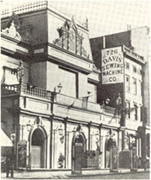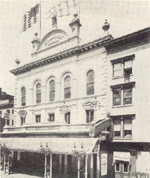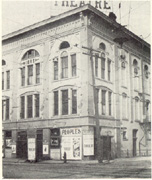|
|
|
History of Signs
A sign - through the ages the word has had many meanings, embracing the religious, the mystic, the strange as well as the simple and the strictly for communication. Long before men were blessed with the ability to vocally transmit their thoughts to one another, they evolved some kind of a sign language to tell of their needs, desires, hopes and fears. They recorded their triumphs and disasters by chiseling their stories on stone. In their primitive way, they created via signs advertisements for their civilization. Through signs, their fellow knew what dangers, joys and beauty to expect in a given area. Are we so different? In a world of many refinements and an atmosphere of super-sophistication, do we not resort still to the emotional impact of a sign language to tell our stories of excitement, suspense, love, fear, etc? You bet we do. Walk down New York's fabled Broadway or any of a hundred other gay white ways across this land and around this world. An army of spinning lights, brilliant colors, vibrant action assaults the imagination from millions of signs, selling everything from toiletries to entertainment blockbusters. The debt of entertainment world to the ageless language of the sign is incalculable. Dealing in commodities as ephemeral as laughter and tears, it finds the spoken and written word poor conductors. Rather the quick and sharp appeal to the senses of the bright light, the action-packed photograph, the pungent headline. The stimulus of an entertainment sales message is aimed not at the intellect but at the emotions of the potential customer. The impulse to buy is the result not so much of conscious determination as of sensory response. For this reason, the sign is a far more successful salesman than the word. The necessity for merchandising ever-changing film attractions made theatres the logical establishments to lead the way in exploring new techniques of outside point-of-sale advertising. This is our story, and we shall study the changing pattern bulletins, has been importantly employed by theatres for a hundred years or more. Typical of such promotion in 1874 is that of the Globe Theatre, New York City; in 1876, the 5th Avenue Theatre, New York; and in 1889, the Peoples Theatre, Toledo, Ohio. |
     |
